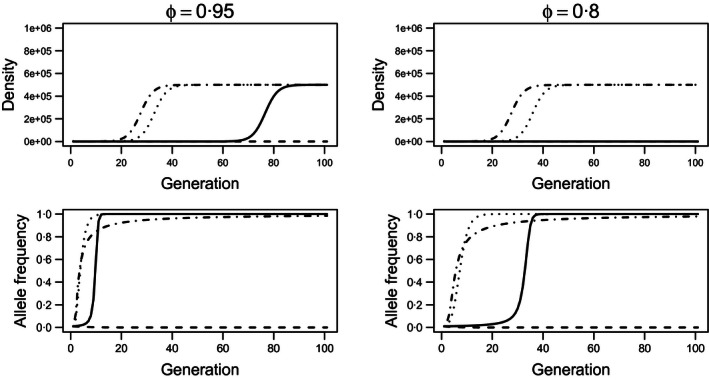Figure 1.

Population size (top row) and resistance allele frequency (bottom row) over 100 generations for landscapes planted with 95% (left column) and 80% (right column) Bt, respectively, when resistance is associated with a 25% reduction in fecundity (λrr = 0·75λss). Density dependence is undercompensating and uniform (β = 1). Solid lines show recessive resistance with a recessive fitness cost (h res = 0, h cost = 0). Dashed lines depict recessive resistance with a dominant fitness cost (h res = 0, h cost = 1). Dotted lines refer to additive resistance (codominant) with a dominant fitness cost (h res = 0·5, h cost = 1), and dash‐dot lines illustrate dominant resistance with a dominant fitness cost (h res = 1, h cost = 1). Populations were founded with N 0 = 1000 insects and initial resistance allele frequency q 0 = 0·01.
